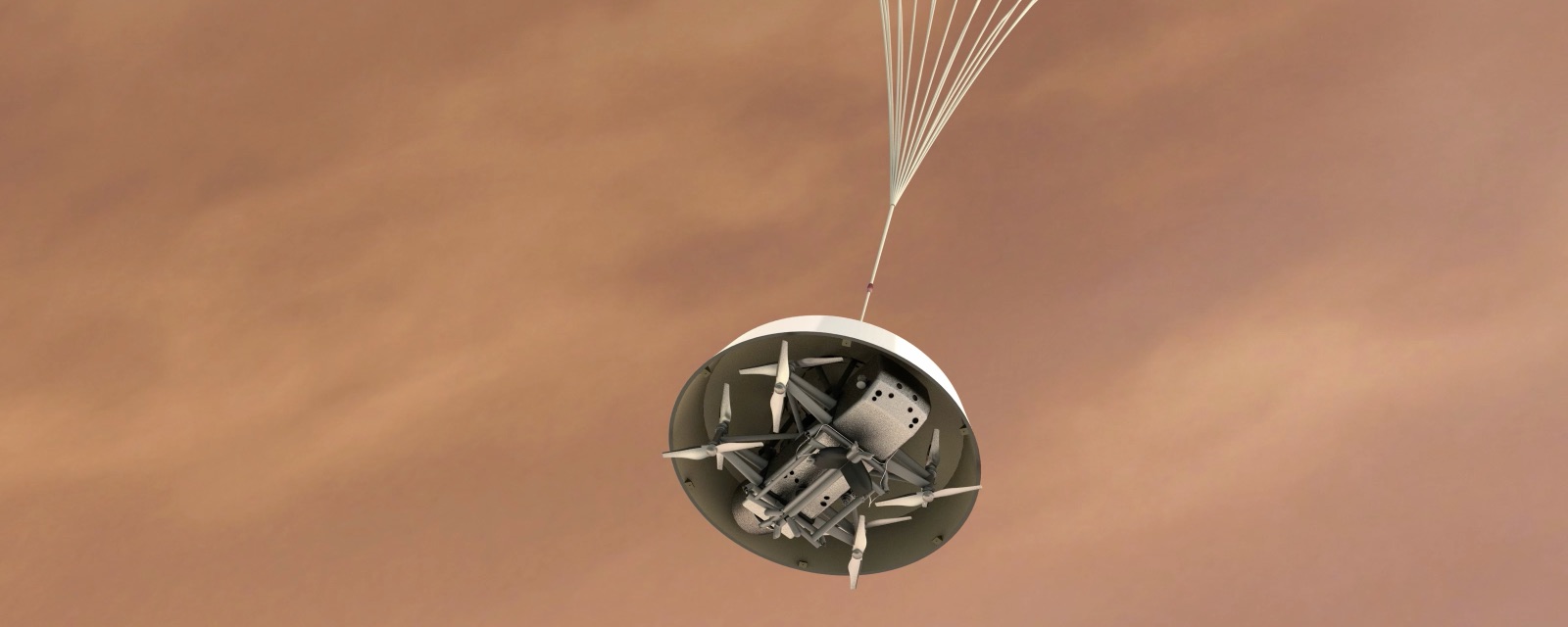
Dragonfly: rotary wing exploration of Titan
Saturn's largest moon Titan has a dense atmosphere that has an "methane cycle" similar to the water cycle here on Earth. Liquid methane exists in oceans and rivers on the surface, it evaporates into a dense, nitrogen-rich atmosphere, it condenses into clouds, and it rains back to the surface.
Its chemistry is similar to the chemistry that existed on Earth prior to the development of life: studying the pre-biotic chemistry of Titan should provide clues to the origin of life here on Earth.
Titan's thick atmosphere (roughly 4.5 times the density of Earth's atmosphere) and low gravity (roughly 1/7 that of Earth) means that the power required to sustain hover on Titan is reduced by a factor of approximately 40 compared with Earth. Not surprisingly, several concepts for aerial exploration have been proposed over the past few decades, ranging from balloons and dirigibles to fixed-wing aircraft and helicopters.
Dragonfly is a rotorcraft that is designed to fly from place to place, sampling the surface chemistry and geology at many locations to study composition and characteristics of the surface as well as Titan's atmosphere. Over the course of its mission it will travel several hundred kilometers from its initial landing site, allowing us to sample inter-dune regions as well as mountainous areas and craters.
Like the Curiosity rover currently exploring Mars, Dragonfly's power comes from a Multi-Mission Radioisotope Thermoelectric Generator (MMRTG). A rechargeable battery will be used during flight, allowing many-kilometer flights per charge. Each full Titan day (T-sol) lasts 16 Earth days, leaving plenty of time for surface science and data transmission to Earth before a night-time recharge.
At Penn State we are working on aerodynamic, structural, and aeromechanical design of the rotors; aerodynamic design of the Dragonfly lander; flight performance calculations; flight planning; wind tunnel testing; and flight control. "Airplane people" don't get to work on interplanetary vehicles very often: this is a tremendously exciting project.
For details about the project (including pictures and videos) please see the main Dragonfly page at https://dragonfly.jhuapl.edu.